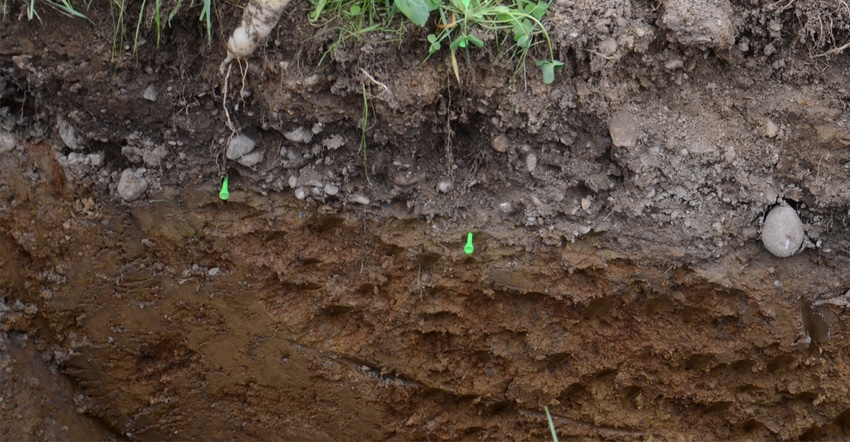
A great way to start the new year is to make a commitment to invest in soil health. The soil is much more than a medium for growing crops. It is a living biological ecosystem. You rely on the millions of tiny microorganisms to do their jobs and create a favorable environment for plants to grow. Allow these microorganisms to work for you and, in return, reap the benefits.
This is the key message that the team of soil conservation partners who prepare Salute Soil Health each month want to convey. The team is led by several Natural Resources Conservation Service personnel, including Don Donovan, Clint Harrison, Derek Schmidt, Brian Musser and Ruth Hackman, district conservationists; Susannah Hinds, grazing specialist; Scot Haley, resource soil scientist; Kris Vance, public affairs specialist; Victor Shelton, state agronomist/grazing specialist; Tony Bailey, state conservation agronomist; and Shannon Zezula, state resource conservationist.
Schmidt says he works with some farmers who are managing their farms in a soil health management system. In the past, these farmers found that their poorly functioning soil produced a crop, even a good crop, for many years, he notes.
However, over time, they began to see poor germination, decreased yield, less porosity, salinity issues and increased erosion. Their soils weren’t as resilient any longer.
Soil health building blocks
“Healthy soil is key to handling weather extremes, pest pressures and just flat out reducing headaches,” Schmidt says. Here are four basic principles he prescribes to improve the health of your soil.
1. Increase diversity. The plant community directly impacts the soil biological community. The plant community is a food source for soil biology. Different crops offer a change of food source and type. Crop diversity and cover crops of various species will offer a biological buffet, Schmidt says.
2. Lengthen the growing season with continuous living roots. The sun is the ultimate source of energy, Schmidt says. Capture more sunlight and put that energy into your soil, and things will improve. One way to do this is to plant a cover crop to continue capturing sunlight well after your production crop has shut down.
3. Decrease disturbance of the soil. Extensive tillage is detrimental to soil health, Schmidt explains. When soil is tilled, the biological community is flipped upside-down, pore channels are broken and organic matter is lost. That’s why no-till operations will tremendously improve soil health.
4. Maintain soil cover. Keep soil cover, which includes crop residue such as mulch or plant stalks and cover crops, on the surface. The purpose for soil cover is not just to prevent soil erosion. Residue maintains good conditions for the microorganisms. Soil microbes live in that residue at the soil surface and convert it into organic matter and nutrients over time.
Contact your local NRCS or county soil and water conservation district office to start your 2017 resolution to improve soil health. You can make healthier soil a reality.
About the Author(s)
You May Also Like




